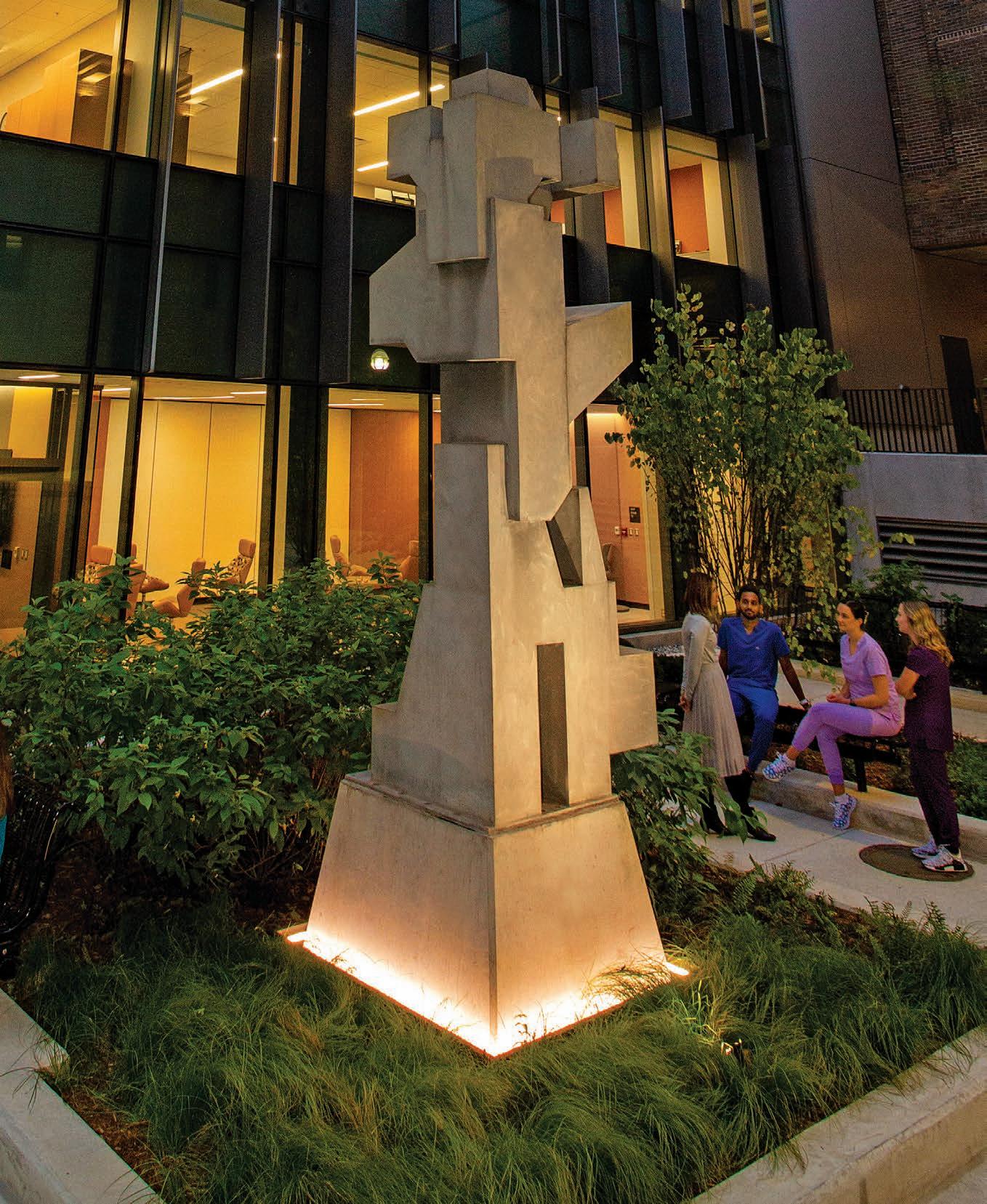
From the Beginning, a Tradition of Excellence and Leadership
A Sesquicentennial timeline tracks the School's historic highlights from 1875 to the present.
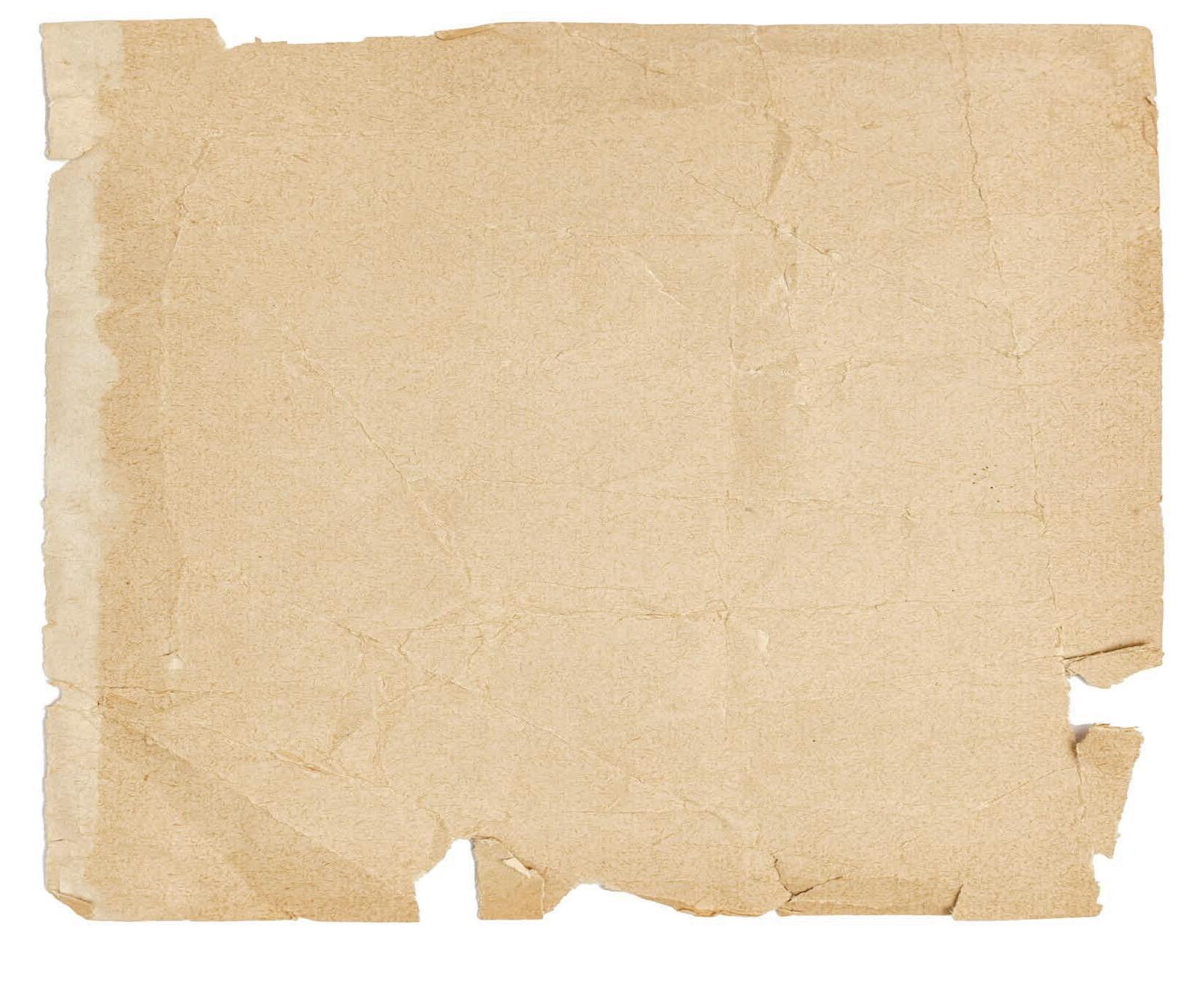


From the Beginning, a Tradition of Excellence and Leadership
A Sesquicentennial timeline tracks the School's historic highlights from 1875 to the present.

The beginnings in 1875 were simple, uncomplicated.
The University of Michigan Regents approved a budget of $3,000 to establish its new College of Dental Surgery. It was located in a renovated professor’s house. Three faculty members welcomed 20 students, who needed only a high school diploma to enroll. The course of instruction for the as-yet unprofessional degree of dental surgery was just two semesters. At the end of the first year, in the spring of 1876, nine of the 20 students graduated.
Overseeing and leading the fledgling dental school in that first year, and for the next 28 years, was a Dean who couldn’t have been more qualified. Dr. Jonathan Taft, a 45-year-old dentist from Ohio, was one of the best known dentists in the country at the time. He was an 1850 graduate of the Ohio College of Dental Surgery in Cincinnati, joined its faculty in 1854 and became its dean in 1858. He was an early advocate of making dentistry a profession, and he advanced his views in the widely read Dental Register of the West, which he had edited since 1854 and eventually owned. In 1859, he published a treatise, “Operative Dentistry,” that was adopted as a textbook by many dental colleges at the time. That same year he was instrumental in the founding
of the American Dental Association, and later served as its president, from 1868-69.
Taft assisted the Michigan Dental Society in its push to convince, first, the U-M Regents and, later, the Michigan legislature that the University of Michigan should open a dental school. When both the state and regents finally approved the idea, in 1875, Taft was asked to become dean. For the next nearly three decades, he implemented and enforced his high standards for the growing profession. In addition to his commitment to excellence in dental education, he brought something else of incredible importance to the new school – the stability of a talented and dedicated leader who remained at the helm for an extended period of time.

That foundation of excellence built by Taft and the early faculty members he recruited from around the country set a tone, a standard, that continued on throughout the 20th century in the decades after Taft retired and died in 1903. The generations of leaders and dentists who followed at the dental school were ingrained with the same mindset: How can we improve? How can we innovate? How can we be the best of the best? How do we make sure we have the best faculty, the best students, the best facilities? It is a driving force to this day, a century and a half later.
From 1876 through this year, the school has graduated 12,062 DDS students.

This composite of the first graduating class in 1876 lists names but not the order on the page. The largest photo at center is U-M President James Angell; directly above Angell is dental school Dean Jonathan Taft. Graduates are the smaller photos across the top though there should be nine. The rest are dental school faculty and other university leaders.
Since the start of the Dental Hygiene program in 1922, the school has granted 3,460 DH degrees and certificates. Graduate degrees in the various specialties added over the years, along with PhDs in the last three decades, boost the student total by a few thousand more. Each of those graduates has gone out into the world and improved the oral health and, thus, the overall health of thousands of people, whether directly or indirectly, in their work as dentists, dental hygienists, researchers and educators.
The 150-year timeline on the following pages is an attempt to help the reader walk through the evolution of the U-M dental school, from the primitive days to the present day. It highlights deans who led the school, curriculum changes, expansion of facilities, new technologies, and other major developments.
Viewed collectively over a century and a half, even in this summary fashion, the history and legacy of the University of Michigan School of Dentistry is clear. All through the years, the founders and those who followed demonstrated an enduring dedication to the highest standards of dentistry, education, science, leadership and excellence. Just as Jonathan Taft would have wanted. ■
Providing a comprehensive history of 150 years at a major dental school would require a book for every year. Those don’t exist. Instead, short histories of certain eras were published in book chapters and random alumni bulletin booklets, particularly around the school’s 100th anniversary in 1975. A recent book covers the school from 1962-2017. Otherwise, the history is found in individual documents and files in the various archives of the school and university.
Here are a few resources used for the historical timeline on the following pages:
• The University of Michigan: An Encyclopedic Survey, a major publication in four volumes from 1942-1954 (and later updated), contains a chapter on the School of Dentistry in Part VII.
• The School of Dentistry Alumni BulletinCentennial Issue 1875-1975, published as a historical retrospective by the late Dr. Charles C. Kelsey (DDS 1964, MS 1967), a prosthodontics faculty member who served as the school historian. The publication is not a chronology, but documents selected people, images and accomplishments.
• Occasional history articles in other Alumni Bulletins during the 1970s and ‘80s.
• Victors for Dentistry (1962-2017), a book edited by former communications director Sharon Grayden with contributions by former alumni magazine editor Jerry Mastey.
• Beginning in the 1990s, the school produced an alumni magazine DentalUM, which later grew into M Dentistry, now published twice a year.
• The online catalog of the school’s Sindecuse Museum of Dentistry lists some of the publications in its collection that are tied to the U-M school.
• A series of school newsletters started in the 1970s, with names such as The Dean’s Memo, Memorandum and The Michigan Dental Explorer, list mundane monthly happenings at the school.

1865-1874
The University of Michigan’s founding date of 1817 in Detroit was followed 20 years later by a move to Ann Arbor in 1837. It wasn’t until 1865 that momentum began to build for the university to add a dental school to train students in the growing occupation of dentistry. It was not yet a profession governed by training standards, though the Michigan Dental Association (MDA) had been founded in 1856. In 1865, a committee of the MDA, headed by Dr. Jonathan Taft, petitioned the U-M Board of Regents to establish a “dental chair” that would be the first dental school in the nation to be part of a university. After Regents took no action, the MDA renewed its call in 1866, 1873 and 1874. The 1873 petition used competitive pressure to note that Harvard University had organized a dental school within its medical department. What follows is the U-M School of Dentistry’s 150-year timeline, starting with its founding in 1875 after Regents and the State Legislature finally saw the need for the school.
1875
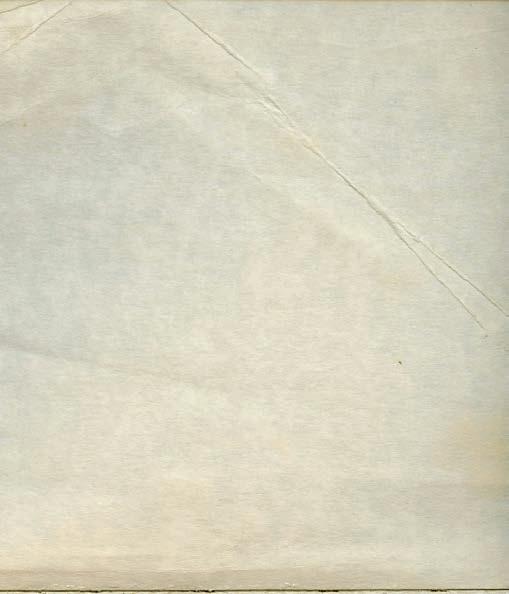
That a College of Dental Surgery be established, which shall, in addition to the facilities now afforded by the Medical Department and Chemical Labora- tory, be constituted by the founding of two professorships.
That the Dental Profession of the State be requested to cooperate with the Regents by suggesting, at the June meeting, such names as they may deem suitable, and also be securing the necessary outfit.
First dental school building, 1875-77.
The Michigan state legislature establishes a College of Dental Surgery at U-M. The same law establishes a Homeopathic Medical College and directs that the new colleges be housed together. Governor John J. Bagley signs House Bill 518 into law on May 1, 1875. U-M Regents formally approve the measure on May 12, 1875.

Jonathan Taft Dean 1875-1903
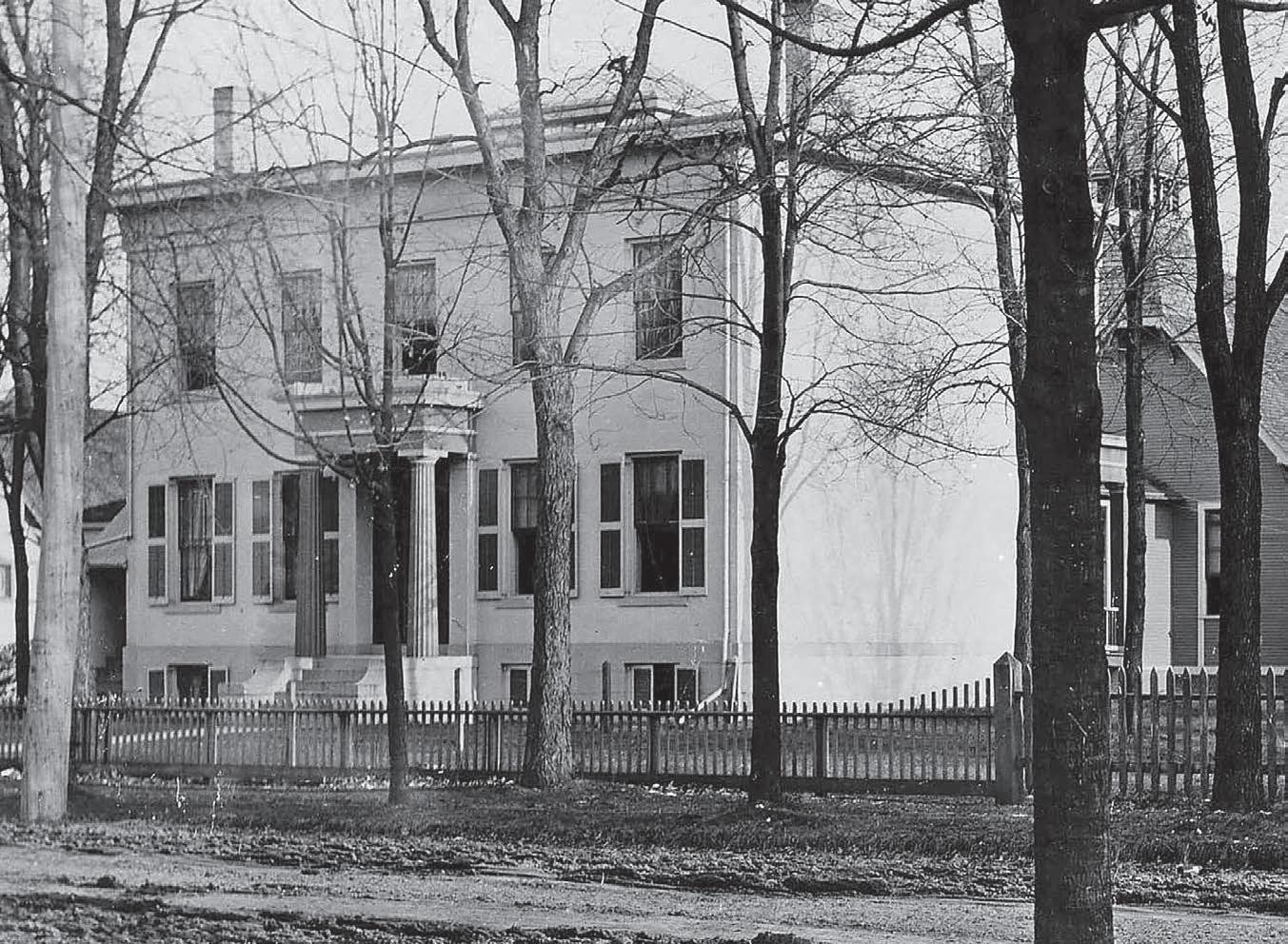


The school graduates its first woman, Alma Fuellgraff.
1880
1877
Second dental school building, 1877-91.
Because of rivalry between dental and homeopathic students and a lack of space, the Dental College moves to a second venue – another renovated professor’s house at the current site of the Clements Library on South University Avenue.
Dental curriculum extended to two years; each term nine months.
1884
A growing number of students prompts Dean Taft to ask regents for an addition to the dental building, but the board rejects the request due to lack of funds.
1885
Dental College curriculum extended to three terms (three years) of nine months each.
1889

School graduates Ida Gray, the first Black female dentist in the country.
After 15 years of using daylight near windows as the only light source while treating patients, gas lighting is added to the clinic.
The College of Dental Surgery becomes the first dental school to provide graduate dental education.
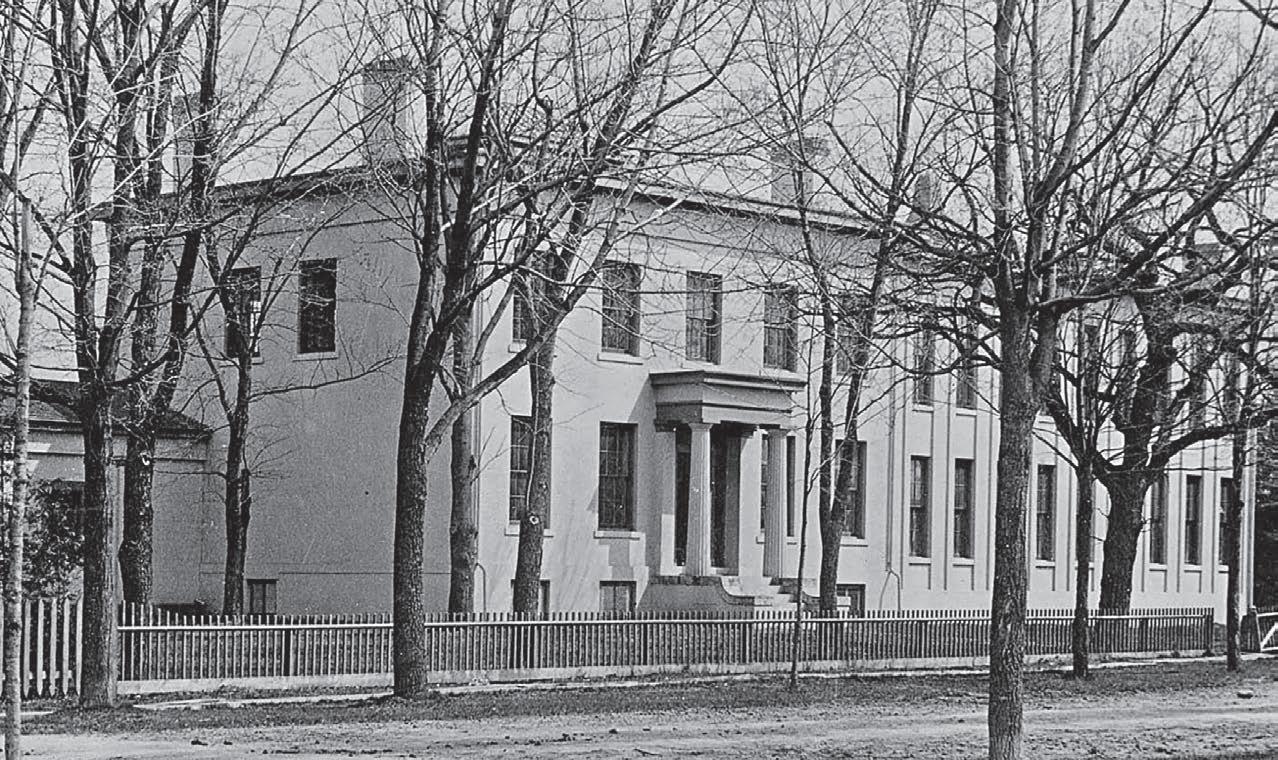
1890
1896 Lecture Hall

Carrie Marsden Stewart
Dr. Carrie Marsden Stewart is the first student to receive a graduate degree, Doctor of Dental Science (D.D.Sc.), after the program was established in 1890 to require a year or more of advanced study beyond the basic dental degree.
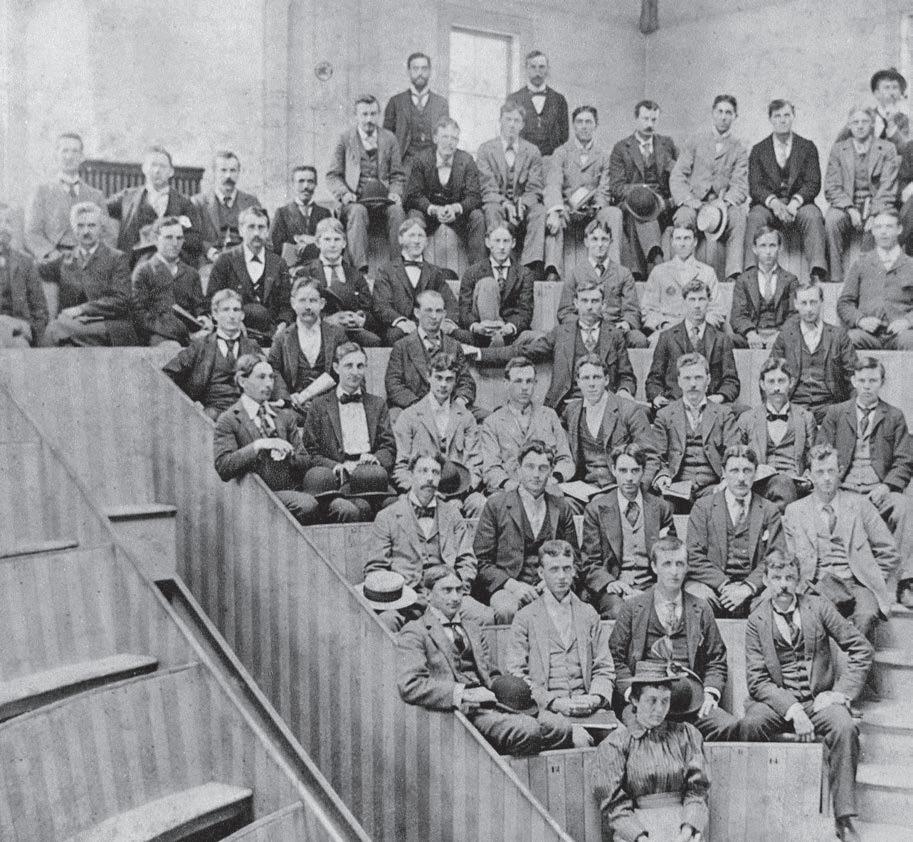
The Class of 1896 sits in a lecture hall with auditorium seating. A note on the bottom of the photo says it was given to the school by E.F. Lohr in 1954 and it identified the woman in the front row as Mary Lohr. Although other students in the photo can be confirmed in the 1896 class graduation composite, Mary Lohr is not among them nor in years before or after the class.
Regents approve $60 to install new-fangled electric lights to replace gas lights in the Clinical Laboratory during the December holiday break. Students had complained that gas lights installed in 1890 were inadequate for the operating room, particularly when window light faded in the late afternoon during short winter days.

1891
Dental school building, 1891-1908.
Dental College moves into a building recently vacated by the University Hospital – on North University Avenue, the current site of the Chemistry Building. Based on its architecture, dental students refer to the building as “the cowsheds.”
1901
Dental curriculum extended to four academic years. However, because the dental profession and other dental schools do not approve, the three-year program is re-adopted in 1904.



School of Dentistry building, 1908-1969.
Property is purchased to construct a building designed to be a dental school. Along North University Avenue at the school’s current location, the three-story structure opened in October 1908 as the most advanced dental education facility in the country. It was the main dental school building for more than 60 years until it was demolished in 1969 when the current clinic building and research tower were completed.
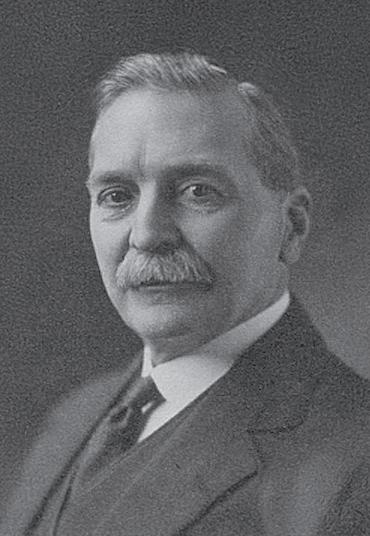
Cyrenus G. Darling
Acting Dean 1903-07
U-M Regents appoint world-renowned dental educator and researcher Willoughby Dayton Miller as the dental college’s third Dean. An Ohio native who earned an undergraduate degree at U-M, Miller was living in Germany where he had conducted research at the University of Berlin for 28 years. Before starting his Deanship in the fall of 1907, Miller visits Ann Arbor briefly, then travels to Ohio to visit relatives. He falls ill with appendicitis and dies in Newark, Ohio, on July 27, 1907. In 1940, a bas relief sculpture as a memorial to Miller was installed and remains on the south side of the school’s Kellogg Building along North University Avenue.
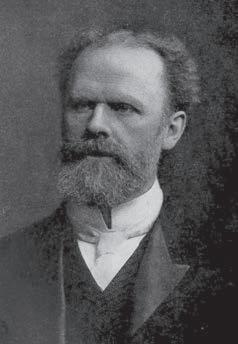
Faculty member
Dr. Russell Bunting begins research on the cause and control of caries.
Four-year curriculum in place. Dental schools nationwide follow the U-M lead and adopt similar programs.
Dr. Chalmers Lyons taught his first oral surgery intern in 1917 at University Hospital, recognized as the start of Oral and Maxillofacial Surgery specialty. Today’s 108-year-old OMFS/Hospital Dentistry department at U-M is the longest continually-maintained program for OMFS residents in the country.


The state’s dentists petition the Michigan legislature and it enacts a law authorizing dental hygienists.

Graduating classes grow steadily to 87 students by 1915, but the advent of World War I significantly drops classes sizes to only 38 by 1920. A decade later it rebounds to 118 graduates in 1930.
This photo was taken in 1909 in the main clinic of the new state-or-theart dental building finished in 1908.
U-M alumna Dr. Hertha Hartwig (DDS 1915) takes over as the Dental Hygiene faculty member in the program’s second and third years.
School approves Dental Hygiene curriculum leading to a certificate. Eight students enroll in the fall and graduate in spring 1922 under the tutelage of Laura May Helmar, a dental office nurse who is also listed as a student in that first class.
U-M graduate school recognizes the dental graduate program and confers its first Master of Science degree.
U-M becomes the first dental school to offer graduate training in orthodontics leading to the Master of Science degree; with one year of training, George Moore and Frank Cartwright earn the first-ever Orthodontics M.S. in 1924.
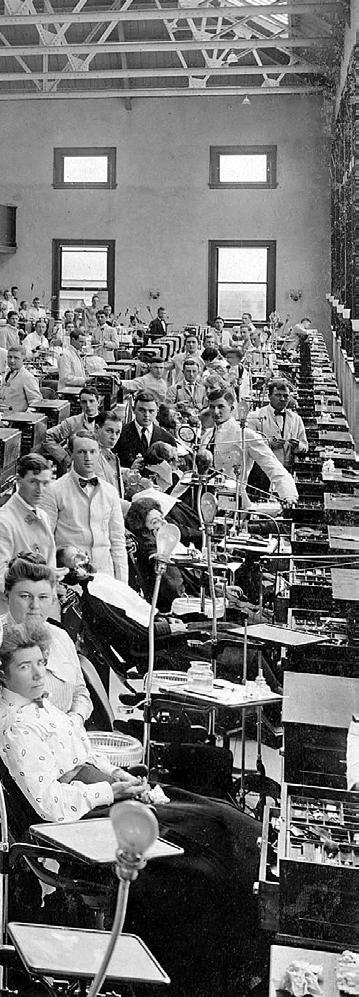

1885-1900 Foot-powered Engine – Foot-powered engines, or pedal drills, like this one were used in the dental school in early years. They were used by dentists to power their drills before the widespread availability of electricity led to more modern drill motors.
The College of Dental Surgery is renamed the School of Dentistry to conform to the U-M policy designating “Schools” as those that require at least four years of undergraduate education for admission. That standard was lowered decades later during the dentist shortage of the 1960s and 1970s when the school accepted students who hadn’t yet completed an undergraduate degree.
1924
Dorothy Hard, DH Director, 1924-68.
A 1922 DDS graduate of the dental school, Dr. Dorothy Hard, is hired to lead the Dental Hygiene program. For the next 44 years, under her forward-thinking leadership and strict student protocols, the DH program becomes a widely-recognized national leader. Hard retired in 1968.

1930
Dr. Kenneth Easlick named director of the Children’s Clinic at the school. He developed a special course in dentistry for children as an early proponent of the specialty.
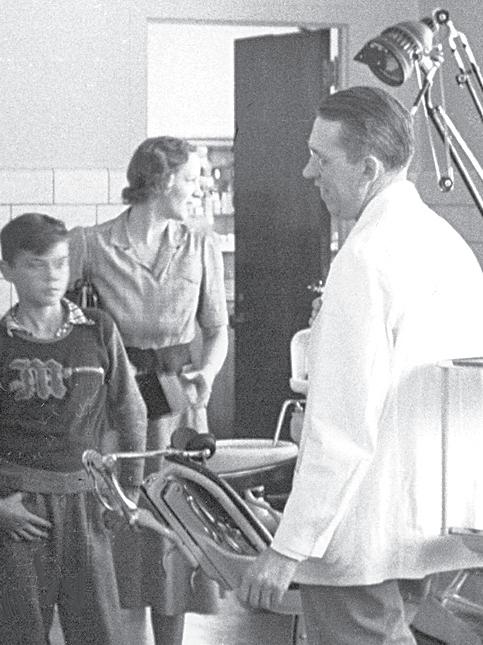
1933
First U-M joint doctoral science degree in dentistry and metallurgical engineering awarded to Dr. Floyd Peyton, who later becomes a pioneer in the field of dental materials.
1931
School begins a longitudinal study of dentofacial records of children at the University Elementary School.
Four-year DDS curriculum re-established. Two-year pre-dental requirement becomes compulsory for all entering students.
Dr. Philip Jay establishes the Michigan Dental Caries Control Program.

Metal shortages because of World War II seriously affect the school’s ability to obtain dental instruments for students and treating patients. The Kellogg Foundation grants $113,000 to purchase instruments to loan to dental students.
The school graduates only 11 students, the fewest in its history, because World War II limited the pool of students.
1935 1942 1947

Chalmers J. Lyons
Dean 1934-35
1938
The school collaborates with the W.K. Kellogg Foundation to plan a building specifically for postgraduate dental instruction. The foundation grants $236,500 and the Public Works Administration provides $209,835.
DH certificate curriculum expanded to two years.
1937
Dr. Paul Jeserich, a proponent of continuing education in the health sciences, persuades the W.K. Kellogg Foundation to provide an $110,000 grant for postgraduate education.

1940
Kellogg Building, 1940-present.
The “W.K. Kellogg Foundation Institute: Graduate and Postgraduate Dentistry” (below) opens in a new three-story building along Fletcher Street, on the west side of the main School of Dentistry building.
The Dental Hygiene curriculum adds an optional route to a bachelor’s degree in DH requiring two years of study in the College of Literature, Science and the Arts, followed by a two-year DH course of study. The certificate program remains.
1948
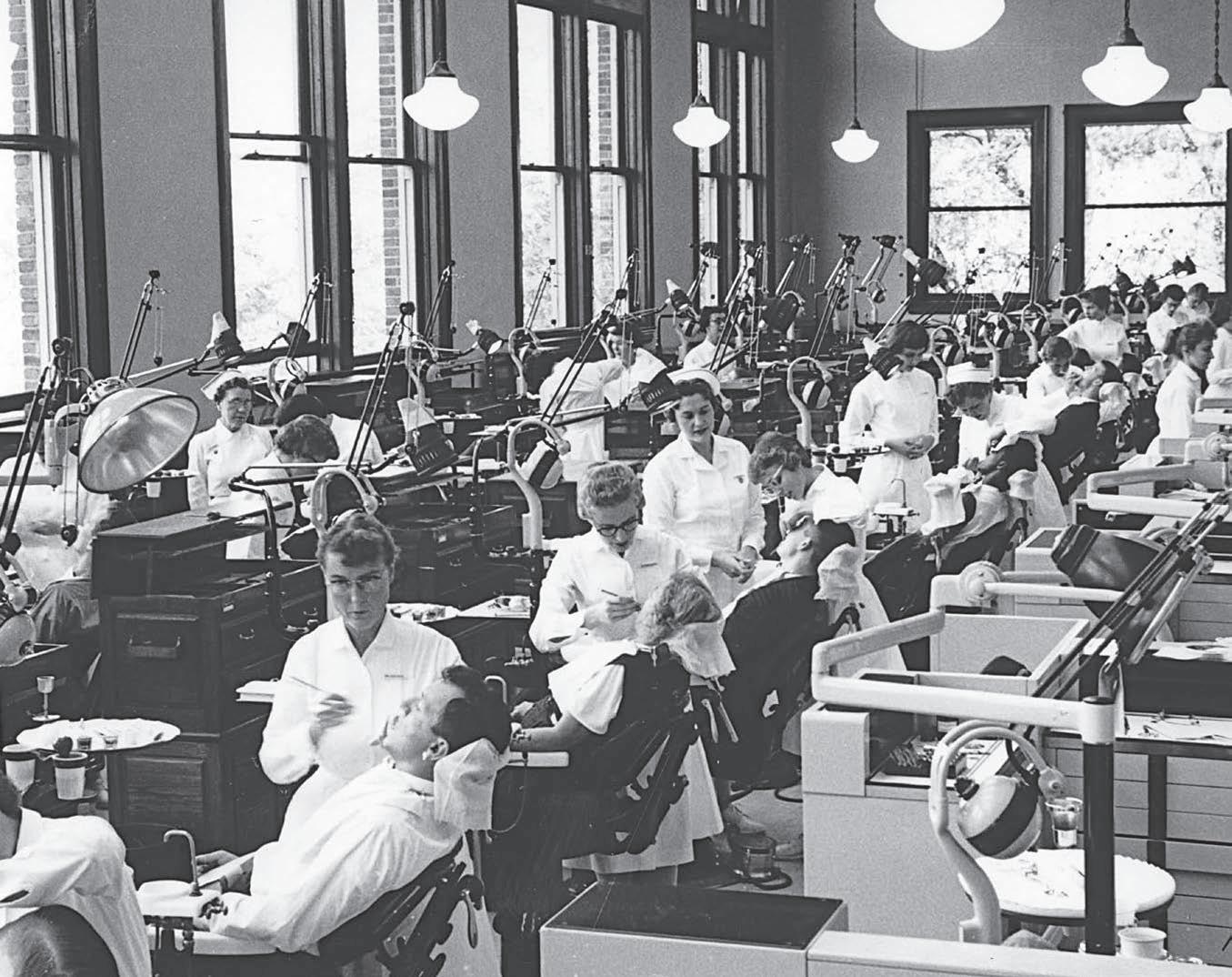

Dental hygiene instructors (in white caps) oversee students treating patients in this photo, ca. 1950s. at work with patients on the DH side of the main dental clinic in the 1908 building. The cubicles and equipment in the photo were an upgrade installed in 1949.
Dr. James Hayward, at age 32, becomes the youngest person to chair a department when he is named to lead Oral Surgery.


Dr. Robert Moyers, a leading researcher in orthodontics, joins the school as department chair. Among many accomplishments, in 1964 he helped establish and was director of the Center for Human Growth and Development, a university-wide, interdisciplinary unit studying childhood development and growth. In 1974, an annual symposium was established in his name.


Ground is broken in February for construction of the new dental building. For the next three years, students and faculty in the old building are subjected to the sights, sounds and distractions of thumping construction equipment and falling bricks as the new building is constructed only a few feet away from the north and east sides of the existing building.
On June 6, 1966, early excavations uncovered a casket containing the body of William Asa Fletcher, the first chief justice of the Michigan Supreme Court. It is reinterred in the nearby Forest Hill Cemetery the next day.
1966
William R. Mann Dean 1962-1981
1964
U-M Regents approve $14.9 million for an expansive new dental school building. The $18.4 million cost was cited at the time as the second most expensive building project in State of Michigan history, behind only the Mackinac Bridge.
Dental Hygiene adds graduate program to address the need for more DH educators.
$1.7 million remodeling of Kellogg Building begins.
1967
1968
Pauline Steele, DH Director 1968-88.
Pauline Steele becomes the second director of the Dental Hygiene Program and serves for 20 years.


The 1908 building is still standing in fall 1969 before being torn down after the new Research Tower (at right) and new clinic building were built around it.

Phase I of the new dental school complex – the main clinical research wing and the Research Tower – are completed and occupied. The 1908 building is torn down and Phase II is started in its place, featuring an elevated library wing along North University and an addition to the east side of the Kellogg Building.
The school adopts a new and expanded curriculum after a major review, with an emphasis on adapting to advances in technology.
Dr. Major Ash becomes chair of the first occlusion department in the U.S.
Phase II of the new building is complete and the school holds a ribbon-cutting to celebrate what is considered the leading dental education facility in the country.

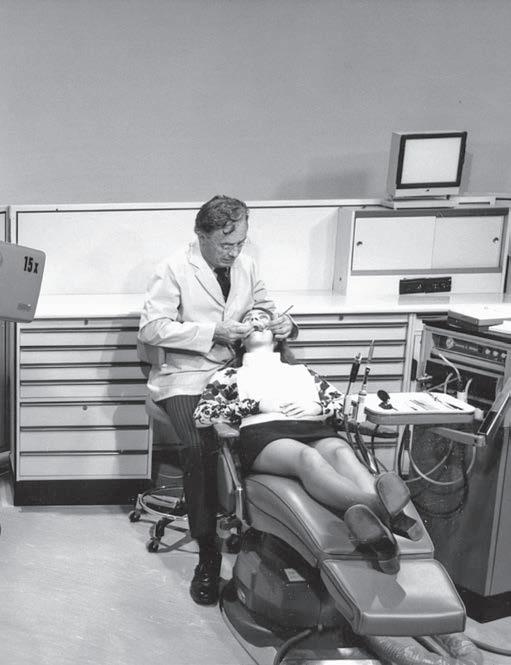
As part of the new building celebration, a sculpture by Bill Barrett is unveiled in the courtyard of the school. A gift of the Class of 1944, the irregularly shaped artwork with no official name quickly becomes known as The Tooth Fairy.
The school’s new state-ofthe-art television studio opens in the addition to the Kellogg Building. Faculty and students are filmed treating patients, as a training aid for students and other providers around the world who were interested in learning procedures and the latest techniques.
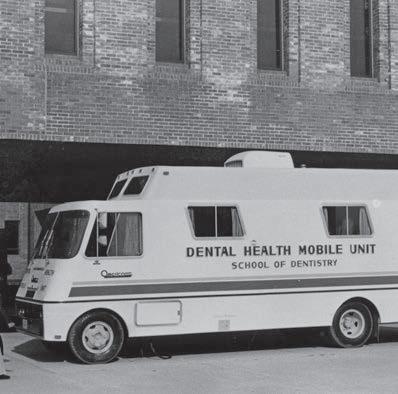
School begins community outreach summer clinics in Adrian and Stockbridge, Michigan. From the early 1970s to 1997, the school operated two mobile units that traveled to community outreach sites around Michigan, including migrant farmworker locations.
Federal Title IX is enacted, marking a turning point in the make-up of dental classes in what had been a male-dominated profession for a century. The law prohibits sex discrimination in educational settings receiving federal financial assistance. By the end of the 1970s, women in entering DDS classes grew from 2% to 20% and grew steadily in coming decades, reaching 50% in 2004.

Dr. Lee Jones
At a time when dentistry organizations were acknowledging a lack of racial minorities in the profession, the dental school is one of the first to take action, establishing the Office of Minority Affairs under the direction of alumnus Dr. Lee Jones (DDS 1961). He led the office for more than 20 years, establishing a supportive environment that continues today.

Summer migrant dental clinic program begins in the Traverse City area.
School celebrates its centennial, which includes the Michigan Marching Band spelling out “DENT 100” before the annual Ohio State football game.
The school receives international attention when faculty member Dr. James Harris, who had been conducting anthropological research in Egypt since 1965, identifies a mummy as Queen Tiye, who was the grandmother of King Tut. Harris used skull x-rays and an electron probe of a small hair sample to identify Queen Tiye’s mummy, which had previously been disregarded and unidentified.
The U-M dental school is recognized by the Student National Dental Association for having the highest enrollment of Black students behind two Historically Black Colleges and Universities, Meharry Medical College and Howard University.

New technology and videos recorded by the school's television cameras allowed students to access audio-visual curriculum materials in the independent learning center called CAI-DENT (Computer Aided Instruction).
The school records its largest-ever class of graduates, with 151. From the 1940s through the 1960s, DDS classes had averaged around 90 students. With the opening of the new, larger building in 1971, class sizes in the ‘70s and ‘80s were regularly around 150 students. DH classes also grew from the previous 39 students before the new school to 80 in the new school.

With Michigan and the nation in a recession, new Dean Richard Christiansen was forced to make staff and faculty cuts by as much as 14-15 percent, along with not filling open positions, over the next two to three years to cover budget shortfalls. Class sizes were also cut during this period; by 1987, the new DDS class was down to 90 students from a high of around 150 at the start of the decade.


Dental Hygiene program drops the 2-year certificate and moves to only a BSDH degree with 1 year of liberal arts courses and three years of DH instruction.
Departments of Hospital Dentistry and Oral and Maxillofacial Surgery move to the U-M hospital, while retaining a presence at the dental school.
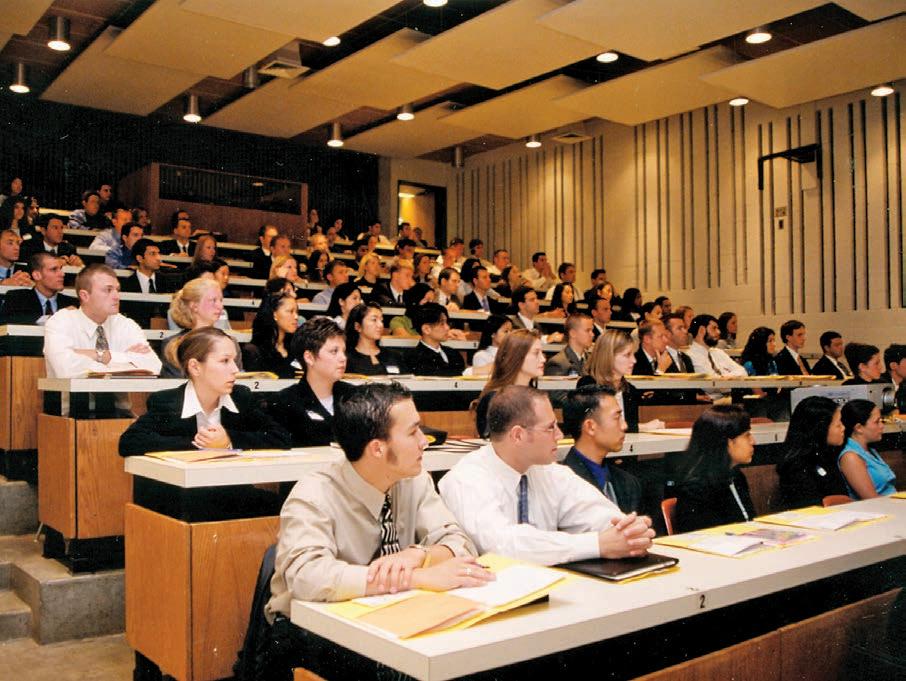
When Richard Christiansen stepped down as Dean, U-M Provost James Duderstadt appointed faculty member William Kotowicz as Interim Dean and chair of a Transition Committee. Duderstadt tasked the committee with a major revamp of the school – determining strengths and weaknesses, reducing the number of departments (from 18 to 6, ultimately), revising the curriculum and finding ways for the school to come out of its silo to become more integrated with other U-M health science disciplines and the rest of campus.

William E. Kotowicz
Interim Dean 1987-89 Dean 1995-2002

Wendy Kerschbaum, DH Director, 1988-2012
Wendy Kerschbaum named director of Dental Hygiene after retirement of Pauline Steele.
When Bernie Machen arrived as Dean in 1989, he immediately endorsed the work of the Transition Committee in realigning and reducing the number of departments. The new structure was officially approved by the school’s Executive Committee in mid-1990.

Office of Alumni Relations formed under the direction of Dr. Arnold Morawa.

Dr. Dennis Fasbinder was one of the faculty members who helped develop the school’s early advances into CAD/CAM and other computer technologies in the early 1990s.
Curriculum Task Force changes were implemented gradually from 1988-91 with goals of providing students with earlier clinical experience; year-round classes and clinics; a new comprehensive patient care program; elements of practice management; and continuing education.
Faculty and administrators universally described the gradual evolution over several years of the new departments and curriculum changes as extremely difficult but necessary, and they credited its success to the committee’s thoughtful hard work and Bill Kotowicz’s administrative leadership and personal skills.

The school opens a museum of dental history, prompted by a major gift the year before from Dr. Gordon Sindecuse, a 1921 DDS alumnus who practiced in Kalamazoo from 1921 to 1952 before pursuing an interest in investing in the stock market. He eventually gives the school a total of $4.8 million for what becomes the Sindecuse Museum of Dentistry.

1992

The school establishes an Oral Health Sciences PhD program under the direction of faculty member Dr. Charlotte Mistretta from 1994-2010.
The school hosts the inaugural Ramfjord Symposium, held biennually in honor of longtime Department of Periodontics chair Sigurd Ramfjord, who retired in 1980 after 30 years at the school as a world-renowned periodontics researcher.
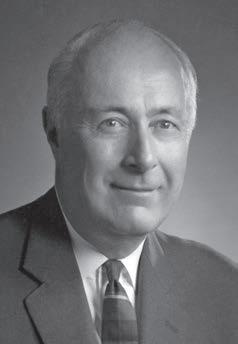
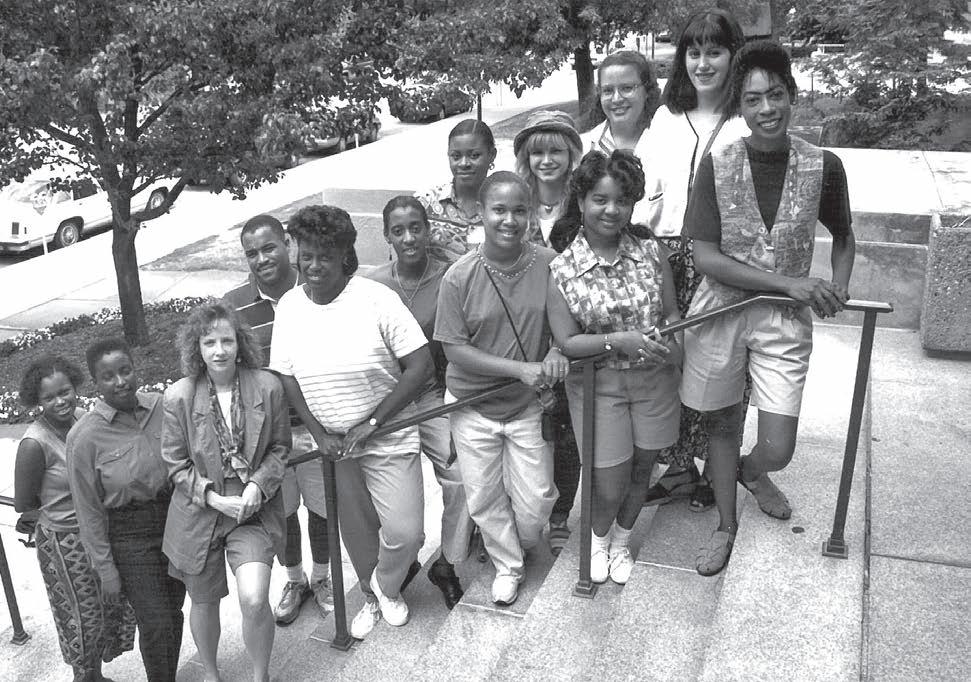
The school establishes Profile For Success, a summer enrichment program introducing dentistry to undergraduates from underrepresented and diverse communities around the country.
The School of Dentistry joins with the American Dental Association, the Michigan Dental Association and the city of Grand Rapids to sponsor an International Fluoridation Symposium to mark the 50th anniversary of fluoridation of the city’s water system. The trials, begun in 1945, proved fluoridation prevented caries and the practice spread across the country and around the world.
The Multicultural Affairs Committee, or MAC, is established at the recommendation of a committee that conducted a schoolwide cultural audit. The group generates programs, events and awards that foster a welcoming, educational and supportive environment for all members of the school community.
Vertically integrated clinics (VICs) are launched. Dental and dental hygiene students gain clinical experience beginning their first year.
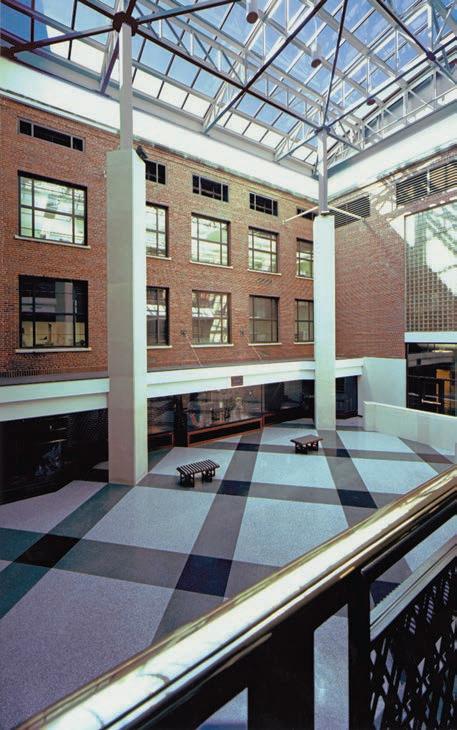
School presents its first annual Ida Gray Award, to Dr. Lee Jones, to recognize students, faculty or staff for their significant contributions to the school’s welcoming and inclusive community.
A $13 million Kellogg Building renovation, including a major expansion of the Orthodontics Department, begins (and is completed in 2000).
First two doctorates in Oral Health Sciences are awarded, to Jacques Nör and Esam Tashkandi.
The longtime Table Clinic Day, a half-day event held in dental school hallways, expands to an all-day Research Table Clinic Day at the Michigan League. It was forerunner of today’s annual Research Day.
School’s Community Outreach expands to year-round part of curriculum, instead of just a summer program, in an agreement with five communitybased organizations around the state who accept fourth-year DDS students as providers.

School begins new tradition of annual White Coat Ceremony for the entering DDS class.



Darnell Kaigler, Jr., is first U-M dental student to complete the dual DDS/PhD program.
A major renovation, the first since the “new” clinical wing of the school was opened in 1969, creates a new Simulation Lab for first- and second-year students, with computers screens and manikin heads at 110 workstations.
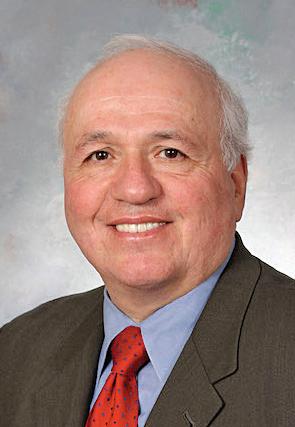

Apple Computer and the dental school launch an innovative partnership to provide dental students with computers and around-the-clock access to education-related content. Students gain access to audio recordings of lectures – the new term then was “podcasts” – that they can listen to anywhere, any time, via Apple Computer’s iTunes platform. Other units on campus and around the country soon follow the innovation.

Dean 2003-13
The school’s $10.6 million in grants from the National Institute of Dental and Craniofacial Research is ranked first among the nation’s dental schools.
Major technology enhancements include 160 computers in the four VIC clinics, which makes patient records available at each cubicle; a MiDENT system to enhance patient scheduling, treatment histories and billing; and 3-D digital impressions are taken and shared with patients in the Advanced Education in General Dentistry clinic.
Dental Hygiene’s E-learning Degree
Completion program begins, allowing students to work on their degree while working in their home communities.

As social media flourishes, the school joins the revolution with YouTube and Flickr sites. By 2014, the photos on the school’s Flickr site had received more than a million views; similarly, the school Facebook page established in 2009 grew to 1.7 million views by 2016.




A Vision Implementation Team spends nearly two years re-envisioning the curriculum, which is implemented in 2010 with continual guidance from faculty. It introduced changes in preclinical instruction, earlier clinical experience, opportunities for students to explore more career path options via a Pathways Program, greater collaboration with faculty, and more exposure to scientific knowledge needed in providing patient care.

Janet Kinney, DH Director, 2012-22 Janet Kinney named directed of the Dental Hygiene program and will lead it through 2022.
Online MSDH program begins.
Dr. Laurie McCauley is named Dean, the first woman to lead the school.
A Strategic Planning Committee is formed to continually assess school needs within five domains: People, Education, Research and Discovery, Patient Care, and Responsible Growth and Sustainability.

Dean 2013-2022
School stops using paper records for new patients and moves to electronic records.

Dental Hygiene curriculum begins transition from three-year schedule with summers off to a two-year, year-round schedule.
Integrated Special Care Clinic, funded by Delta Dental, opens at the school’s Community Dental Center in downtown Ann Arbor. It later moves to the dental school.
Faculty member Stephen Stefanac symbolically makes a paper record into a paper airplane to commemorate the school's move to electronic records.
The school hosts the inaugural Kerr Symposium, a biennial event named in recognition of the achievements of Dr. Donald Kerr, a dental and medical school faculty member for 40 years before retiring in 1977. He was widely recognized for his work in periodontology and oral pathology, along with the development of special dental programs for oral cancer patients.
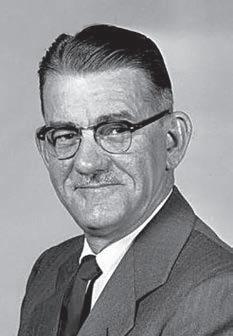
University dignitaries and state legislators attend the groundbreaking ceremony for the start of a major, four-year renovation of the School of Dentistry. Called Blue Renew, the $140 million project is funded from the dental school, university and State of Michigan. It is the first major renovation of the dental school’s main building since it was completed in 1971.
The worldwide Covid-19 pandemic hits in March.
Enhanced health and safety protocols are immediately implemented for faculty, students, staff, patients and Blue Renew construction workers who must be in-person to complete their work or treatment. But most of the school operations (other than clinical care) move online with faculty, students and staff working remotely from their homes. In less than a week, faculty and administrators convert the curriculum coursework to online instruction. Students and faculty interact via Zoom and other online conferencing. The entering first-year class, which normally arrives in-person in early summer, begins classes online and doesn’t arrive at the school until early fall.
Commencement and the White Coat Ceremony for first-year students are held online because of pandemic restrictions involving crowds.

Health safety protocols during the Covid pandemic included temperature checks for everyone entering the dental school, here in September 2020.


In a typical scene four months after the COVID-19 pandemic disrupted campus and the world, DDS students are shown during a Zoom meeting for an online class with faculty member Dr. Dennis Fasbinder. (Photo courtesy Sarah Swartz-Bouwkamp, Class of 2022.)
Students and faculty show their Covid-19 vaccination cards in this collage from social media in early 2021.



The Blue Renew renovation continues as does student instruction and patient care thanks to a well-planned and choreographed schedule that closes only some of the clinics until their remodeling is complete. When those re-open, others are closed for remodeling. The school’s north entrance, next to the Fletcher Street Parking Structure, becomes the main entrance with easier and more obvious access for patients. A new four-story addition rises in the former large courtyard along North University Avenue.
First cohort of graduate students begin school’s new one-year MS degree in Oral Health Sciences.

In March 2021, at the one-year mark of the Covid-19 pandemic, students treat patients in one of the newly renovated clinics being brought online on a rotating basis as part of the Blue Renew building project. The large yellow gowns were mandated as a more effective Personal Protective Equipment. Compared to white clinic coats, the gowns used heavier, material, leading some students and faculty to label the garb as “shower curtains.”
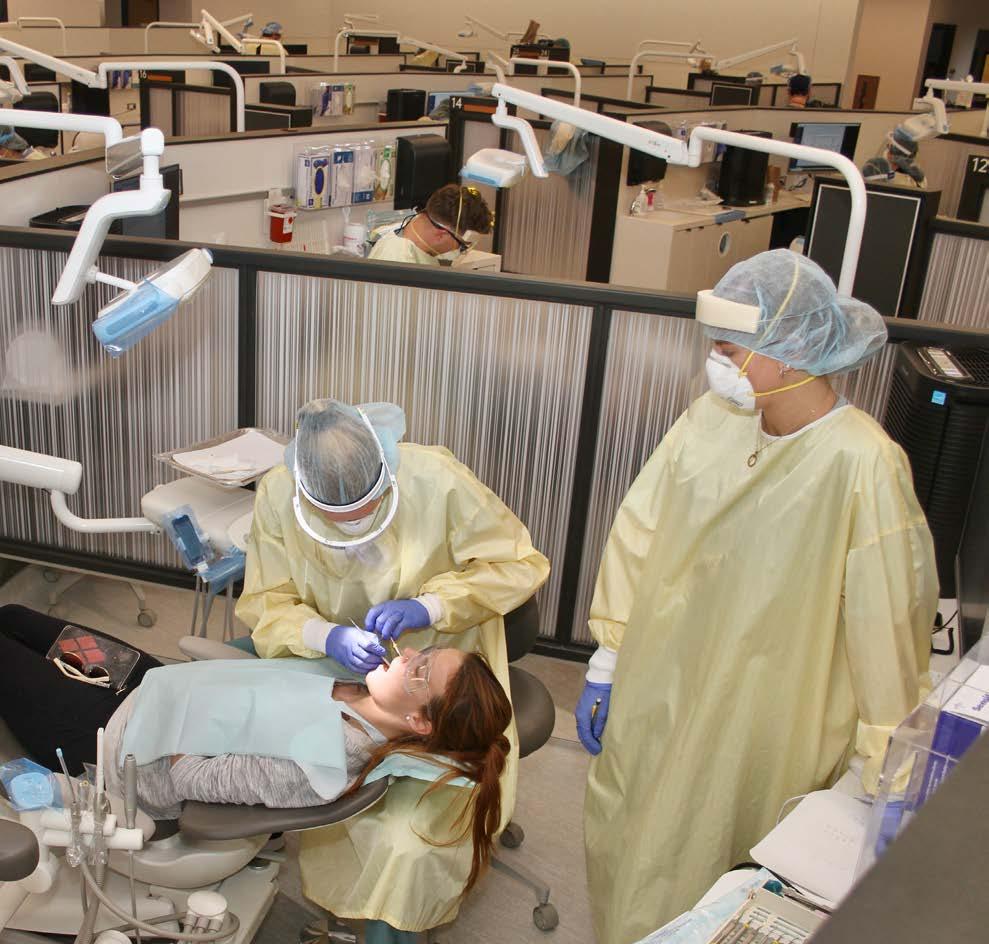

Jan Hu
Interim Dean 2022-23
After nine years as Dean of the School, Laurie McCauley is named Provost of the University of Michigan. Jan Hu, chair of the Department of Biologic and Materials Sciences & Prosthodontics is named Interim Dean.
Division of Dental Hygiene celebrates its Centennial in August. The actual 100th anniversary was in 2021, but the celebration was postponed because of the Covid-19 pandemic.

U-M President Mary Sue
Dental Hygiene Class of 1948 members
Virginia McKown (left) and Myra Breakey were the most senior hygiene graduates to return for the program's Centennial Celebration, held in 2022 after the Covid pandemic delayed it by a year.

To celebrate the completion of the major Blue Renew renovation, in September the school holds a ribbon-cutting program attended by a large crowd of dignitaries, alumni and friends of the school. Hundreds of members of the public also tour the newly remodeled building.
“Perennial,” a striking art installation by award-winning artist Ralph Helmick, is completed in the three-story Sindecuse atrium.
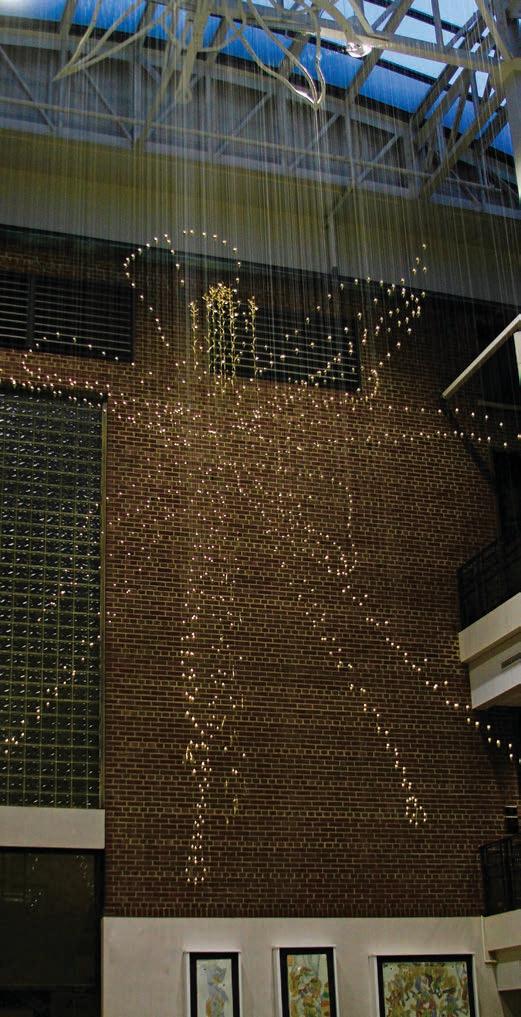
The “Perennial” sculpture hangs from the top of the atrium. It is composed of more than 900 goldleafed elements suspended by thin steel cables to form a 3-D rendering of a columbine flower.

Jacques Nör Dean 2023-present
Jacques Nör, Chair of the Department of Cariology, Restorative Sciences and Endodontics, is named Dean.
The school’s Orthodontics Department celebrates its 100th anniversary.
Jennifer Cullen, DH Director, 2024-present
Jennifer Cullen named Director of the Dental Hygiene Division.

The Oral Health Sciences pro gram celebrates its 30th anniversary of graduating PhD students with an event that draws alumni and speakers from around the country.
School administrators and a Sesquicentennial Committee develop a year-long slate of activities to celebrate the school’s 150-year tradition of excellence and leadership.
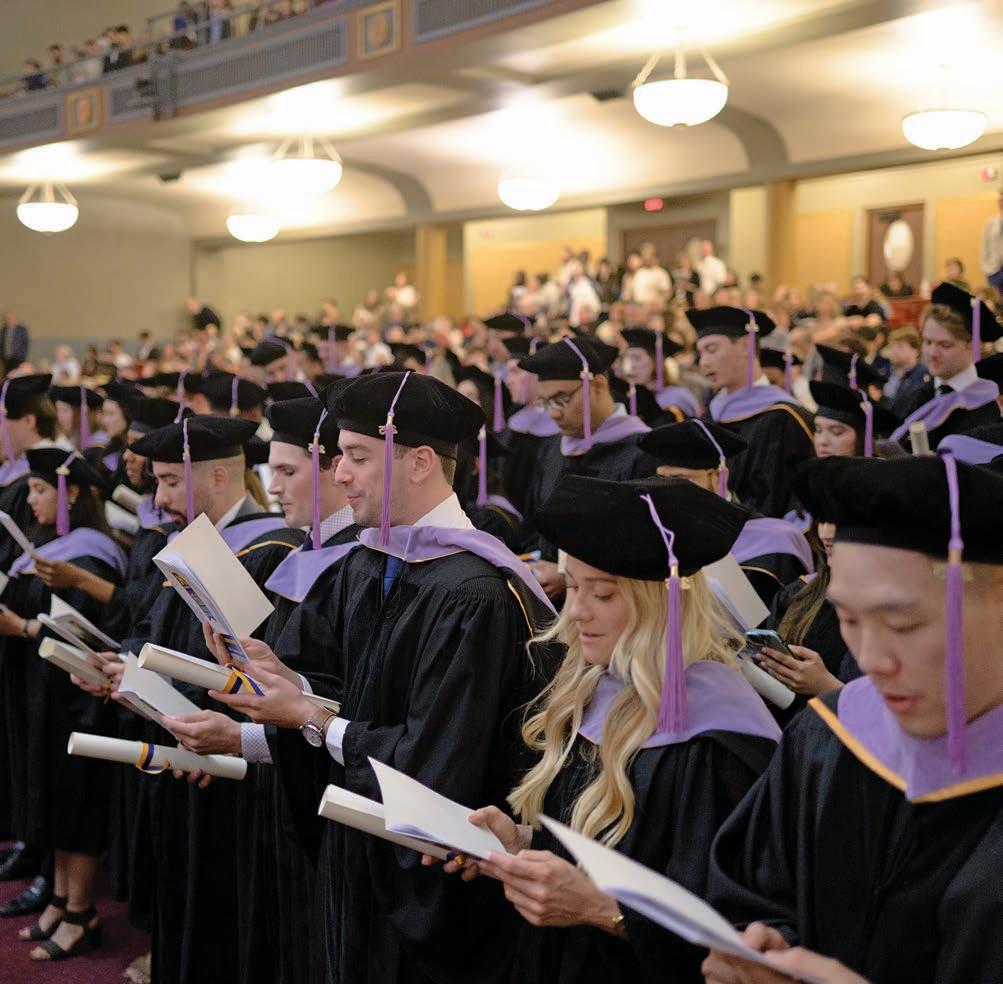
Graduates at the 2025 commencement ceremony at Hill Auditorium recite the Dentist’s Pledge.
Watch Related Video
https://myumi.ch/E88Wk
